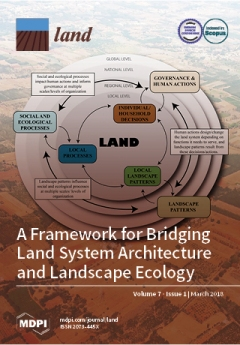Resource information
Context: The fundamental driving force of land use and land cover (LULC) change is related to spatial and temporal processes caused by human activities such as agricultural expansion and demographic change. Landscape metrics were used to analyze post-war changes in a rural mountain landscape, the protected area of Halgurd-Sakran National Park (HSNP) in north-east Iraq. Therefore, the present work attempts to identify the temporal trends of the most fragmented land cover types between two parts of the national park. Objectives: The objectives of this study are to compare two land cover classification algorithms, maximum likelihood classification (MLC) and random forest (RF) in the upper and lower parts of HSCZ, and to examine whether landscape configuration in the park has changed over time by comparing the fragmentation, connectivity and diversity of LULC classes. Methods: Two Landsat images were used to analyze LULC fragmentation and loss of habitat connectivity (before and after the Fall of Baghdad in 2003). Seven landscape pattern metrics, percentage of land (PLAND), number of patch (NP), largest patch index (LPI), mean patch size (MPS), euclidian nearest neighborhood distance (ENN_AM), interspersion and juxtaposition (IJI) and cohesion at class level were selected to assess landscape composition and configuration. Results: A significant change in LULC classes was noticed in the lower part of the park, especially for pasture, cultivated and forest-lands. The fragmentation trends and their changes were observed in both parts of the park, however, more were observed in the lower part. The inherent causes of these changes are the socio-economic factors created by the 1991–2003 UN post-war economic sanctions. The changes increased during sanctions and decreased afterwards. The fall of Baghdad in 2003, followed by rapid economic boom, marked the greatest cause in land use change, especially in changes-susceptible cultivated areas. Conclusions: Shrinkage of forest patches in the lower part of the park increases the distance between them, which contributes to a decline in biological diversity from decreasing habitat area. Lastly, the results confirm the applicability of the combined method of remote sensing and landscape metrics.


